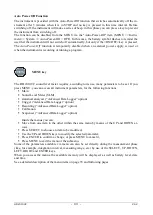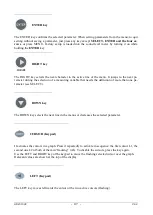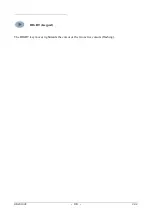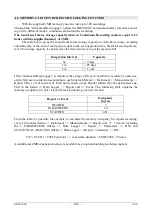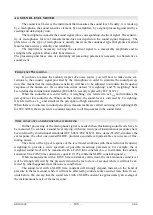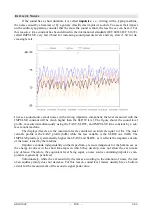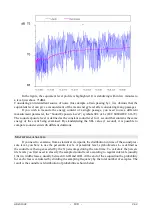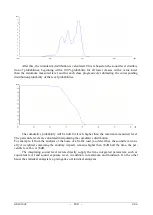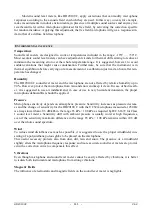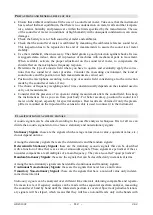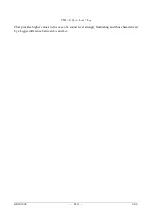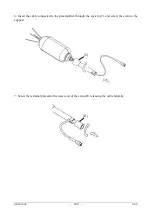
HD2010UC
- 106 -
V4.2
I
MPULSIVE
N
OISES
If the sound has a short duration, it is called
impulsive
: i.e.: writing with a typing machine,
the noise caused by a hammer or by a gun are classified as impulsive sounds. To assess their impact
on the auditory apparatus, consider that the more the sound is short, the less the ear can hear it. For
this reason, a time constant has been defined in the international standards (IEC 60651/IEC 61672),
called IMPULSE, very fast (35ms) for increasing sound pressure levels and very slow (1.5s) for de-
creasing levels.
In case a sound source emits noises with a strong impulsive component, the level measured with the
IMPULSE constant will be much higher than the SLOW level. The figure shows the sound level
profile, measured simultaneously using the FAST, SLOW, and IMPULSE time constant by a sur-
face mount machine.
The displayed levels are the maximum levels calculated on intervals equal to 1/8s. The most
variable profile is the FAST profile (8dB) while the less variable is the SLOW one (3dB). The
IMPULSE profile is systematically higher than FAST and SLOW, as it reflects the impulsive nature
of the noise issued by the machine.
Impulsive sounds, independently on their spectrum, are more dangerous for the human ear, as
the energy involved, in the short time-lapse in which they develop, does not allow the ear to take
any defence. Therefore, the equivalent level being equal, a noise source containing impulsive com-
ponents is generally penalized.
Unfortunately, while the ear sensitivity decreases according to the duration of noise, the risk
of an auditory injury does not decrease. For this reason, sound level meters usually have a built-in
circuit for the measurement of the acoustic signal peak value.
Summary of Contents for DeltaOHM HD2010UC
Page 2: ...HD2010UC 2 V4 2 ...
Page 129: ...HD2010UC 129 V4 2 NOTES ...
Page 130: ...HD2010UC 130 V4 2 NOTES ...
Page 131: ......


